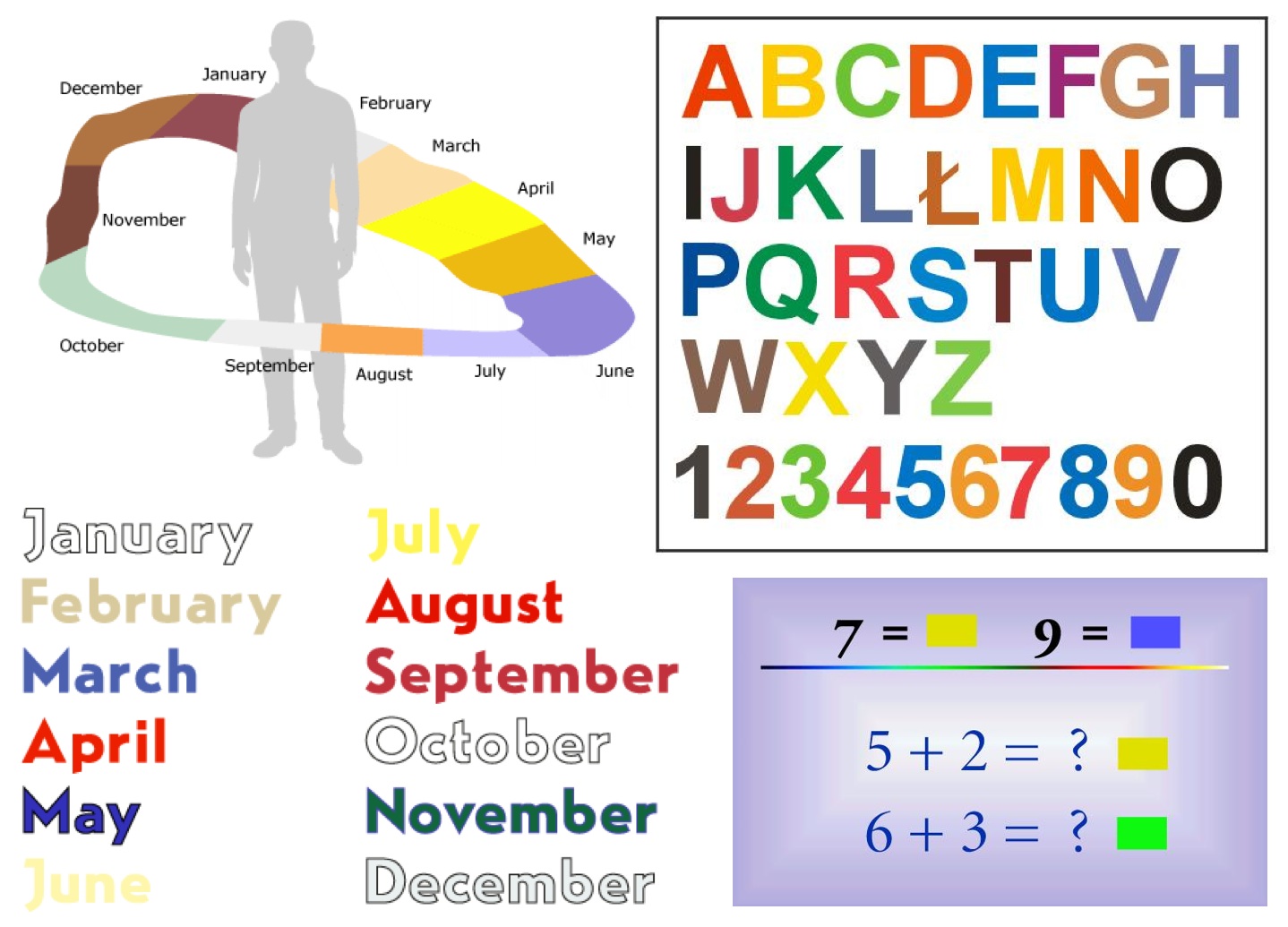
They often see music as colours when they hear it, and taste textures like round or pointy when they eat foods. People who have Synesthesia are referred to as Synesthetes.
Spatial sequence synesthesia involves seeing numbers or numerical sequences as points in space (e.g., close or far away). Synesthesia (American English) or synaesthesia (British English) is a perceptual phenomenon in which stimulation of one sensory or cognitive pathway leads. Synaesthesia is a neurological trait or condition that results in a joining or merging of senses that aren’t normally connected. Ordinal linguistic personification is a kind of synesthesia where ordered sequences (e.g., the days of the week) are associated with personalities or genders. Number form occurs when a mental map of numbers involuntarily appears whenever someone thinks of numbers. 
It can be benign-such as an observed advantage in recognizing facial expressions-or burdensome, as in the case of a neurologist who felt intense pressure in his chest when he saw a patient receiving CPR. Mirror-touch synesthesia has been described as a kind of supercharged empathy: A person feels as though they’re being touched if they witness it happening to someone else.Lexical-gustatory synesthesia occurs when hearing certain words triggers distinct tastes.
 Grapheme-color synesthesia occurs when letters and numbers are associated with specific colors. As stated above, the definition of grapheme-color synesthesia is the phenomenon of experiencing color sensation, viewed in real life or internal space, automatically when presented with graphemes. Chromesthesia occurs when certain sounds (like a car honking) can trigger someone to see colors. Auditory-tactile synesthesia occurs when a sound prompts a specific bodily sensation (such as tingling on the back of one’s neck). Synesthesia is a neuropsychological condition in which the stimulation of one sense automatically triggers the experience of another or several other senses. While nearly any sensory combination is possible in synesthesia, here are some of the most well-known ways it manifests:
Grapheme-color synesthesia occurs when letters and numbers are associated with specific colors. As stated above, the definition of grapheme-color synesthesia is the phenomenon of experiencing color sensation, viewed in real life or internal space, automatically when presented with graphemes. Chromesthesia occurs when certain sounds (like a car honking) can trigger someone to see colors. Auditory-tactile synesthesia occurs when a sound prompts a specific bodily sensation (such as tingling on the back of one’s neck). Synesthesia is a neuropsychological condition in which the stimulation of one sense automatically triggers the experience of another or several other senses. While nearly any sensory combination is possible in synesthesia, here are some of the most well-known ways it manifests: #Synthesia psychology tv#
Media like books, films, and TV shows often take advantage of the multimodal mental imagery associated with synesthesia (which explains the popularity of cooking and baking shows). Some synesthetes perceive texture in response to sight, hear sounds in response to smells, or associate shapes with flavors.

However, not all types of synesthesia have been documented or studied, and the cause remains unclear. Since synesthesia can involve any combination of the senses, there may be as many as 60 to 80 subtypes.







 0 kommentar(er)
0 kommentar(er)
